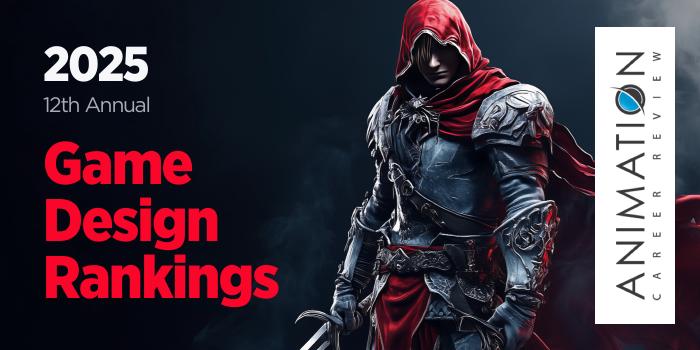The College of Creative Arts at Miami University (Miami U) houses the Department of Emerging Technology in Business and Design (ETBD), which provides access to more than 50 games courses; an honors program with special course selections and the opportunity to work and collaborate with the same cohort for four years; and the ETBD internship program. Participation in the program is mandatory.
Students have access to more than 20 local game studios. Examples include Green Door Games, Max Gaming Technologies, SGM Games, Few Remain, Ganbaru Games, Funky Visions, Wraith Games, MouseMouse Media, Multivarious Games, and Aertherbyte Studios, Inc.
The ETBD Department also provides access to state-of-the-art production facilities and labs such as the Huge Immersive Virtual Environment (HIVE); John Smale Interactive Visualization Lab and Center; and the Esports Lounge and Arena.
Within the department is an Emerging Technology in Business and Design BA, and a Games and Simulation program with BS and minor options. The ETBD BA has Digital and Applied concentrations. Consisting of 63 credit hours, both concentrations allow students to study games through required courses. Students in the Digital concentration will also have opportunities enhance their game studies through electives.
Course examples for the Digital concentration include Introduction to Game Design; Intermediate Interaction Design; Introduction to Game Programming; Art and Digital Tools; and Introduction to Game Studies. Elective examples include Software Construction; Electronic Music; Software Engineering; and Visual Fundamentals-Design and Composition
The Applied concentration consists of courses such as Intermediate Interaction Design and Development; Introduction to Game Programming; Art and Digital Tools; Advanced Interaction Design and Development; Collaborative Laboratory; and Introduction to ETBD.
The Emerging Technology in Business and Design BA program culminates with the Senior Degree Project and Emerging Technology Practicum for the Digital concentration. Students in the Applied concentration may choose the practicum or project as the culminating experience for the program.
The Games and Simulation BS has concentrations in Game Art, Game Development, and Game Studies. Students in all concentrations will complete a total of 124 credit hours including 76 in the Games and Simulation major. Course examples include Introduction to Game Design; Intermediate Interaction Design and Development; Game Usability and Human Factors; Game Engine Scripting; Foundations in Digital 3-D Modeling and Animation; Writing for Games; Indie Game Development I-II; and Advanced Game Design.
Concentration areas are 21 credit hours, with a specific set of required courses for each. For example, Game Art students will take courses such as Observational Drawing and 3D Shading and Texturing. Game Development students will take courses such as Game Design and Implementation; Object-Oriented Programming; and Advanced Graphics and Game Engine Design. Game Studies students will take courses such as Rhetoric of Games; Research Methods in Games; and Games and Learning.
Optional electives allow students to develop advanced skills in game and software design. Course examples include Software Construction; Virtual Reality; Digital Experience Bootcamp; Artificial Intelligence; Software Engineering for User Interface and User Experience Design; and Algorithms.
The Games and Simulation BS program culminates with the 12 credit hour Capstone, consisting of Game Prototyping, Pipeline and Production (three credits); Game Preproduction (three credits); and Game Production (six credit hours). Upon completion of the Capstone, students will have an industry-ready game.
The cross-disciplinary Games and Simulation minor consists of 19 total credit hours, with collaborative courses between ETBD and the Art and Computer Science Departments. Electives allow students to explore particular areas of interest in games such as programming and writing for games. Required courses include Introduction to Game Studies; Introduction to Game Design; and Introduction to Game Careers.
Other course examples include Indie Game Development I-II; Digital 3D Modeling and Animation; Games and Learning; 3D Digital Sculpting; Writing for Games; and Introduction to Game Programming. The program culminates with a final project.
Graduates of the Game Design programs at Miami University often continue on to graduate school or pursue advanced roles in game design and development, film and animation, game mechanics and technology, visualization and simulations, digital marketing, and UX design, among others.
Miami U Game Design alumni have been hired at places such as Rockstar Games, Nintendo, Amazon Games, LucasArts, Activision Blizzard, Microsoft Studios, Google, ZeniMax Media, Gearbox Software, Zynga, Games+Learning+Society (GLS) Conference, Proctor & Gamble (P&G), and Oblong Industries.
Founded on February 2, 1809, Miami University is one of the oldest public universities in the U.S. Also an original Public Ivy, the school serves approximately 18,620 students across campuses in Oxford (main), Hamilton, Middletown, and West Chester, Ohio. The school also has an overseas location—the John E. Dolibois European campus in Differdange, Luxembourg—that welcomes around 220 students annually.
Miami University Ohio provides 200 majors and minors in more than 120 areas of study, along with over 70 master’s and doctoral degree programs. Miami U’s regional campuses also provide a variety of associate degree programs. All other programs are housed across seven academic colleges and schools. Miami University Ohio is accredited by the Higher Learning Commission (HLC).







